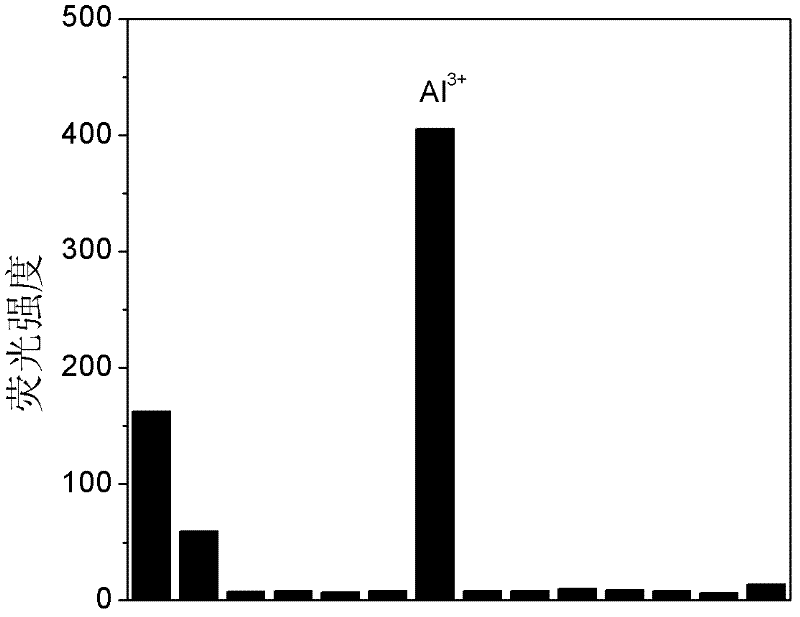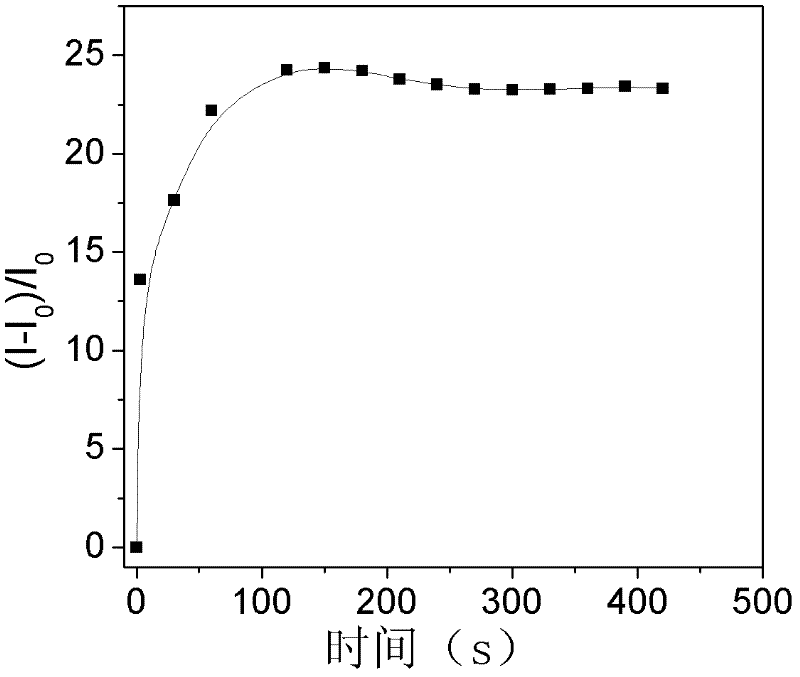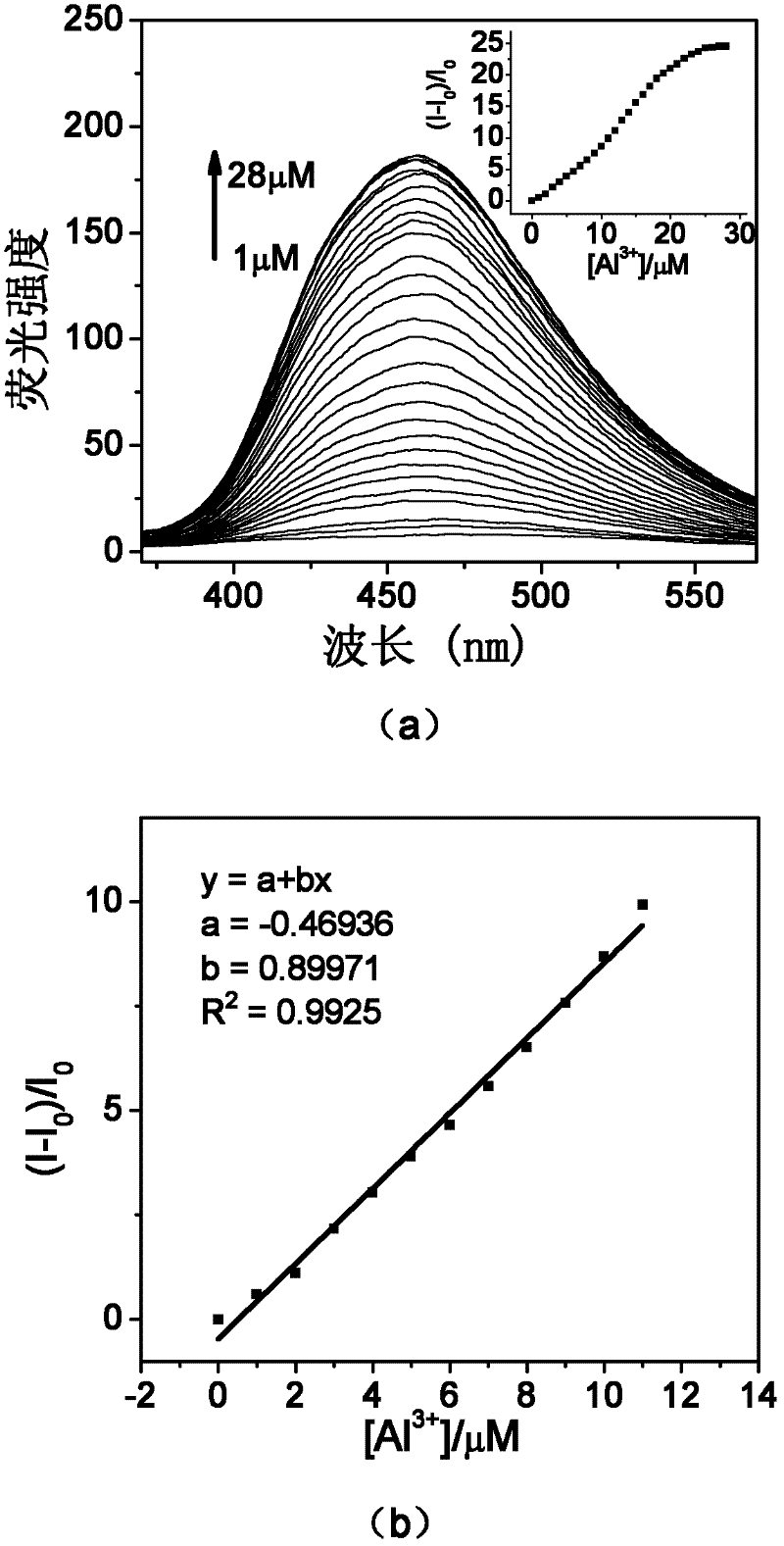Fluorescent reagent for detecting specificity of aluminium ions based on aggregation-induced emission principle
A technology for fluorescent reagents and aluminum ions, which is applied in the field of fluorescent reagents for the specific detection of aluminum ions based on the principle of aggregation-induced luminescence, can solve the problems that have not been popularized in practical applications, the synthesis of detection reagents is complicated, and the sensitivity is low, and the cost of raw materials is achieved. Inexpensive, good specific fluorescence recognition, less environmental and human pollution effects
- Summary
- Abstract
- Description
- Claims
- Application Information
AI Technical Summary
Problems solved by technology
Method used
Image
Examples
example 1
[0019] Example 1: Selective recognition test
[0020] Take a 100ml volumetric flask, prepare 100μM TriPP-COONa solution according to the volume ratio of tetrahydrofuran and water 1:3, take 4ml solution, inject 50μM different ions respectively. The 14 kinds of ions selected in this experiment are as follows (in order to eliminate the interference of negative ions, the tested samples all use metal nitrate solution): Al 3+ 、K + , Mg 2+ , Ca 2+ 、Ce 2+ , Hg 2+ , Fe 3+ 、Ag + 、Cu 2+ 、Cr 2+ 、Ba 2+ 、Ni 2+ , Pb 2+ , Zn 2+ . In order to compare the intensity of the fluorescence detection signal of different ions conveniently, we draw the maximum emission intensity of the fluorescent reagent containing different ions into a histogram (excitation wavelength 326nm), see figure 1 .
example 2
[0021] Example 2: Detection time test
[0022] Take 4ml of the TriPP-COONa fluorescence reagent provided in Example 1, first measure the fluorescence intensity of the blank fluorescence reagent before adding aluminum ions, then inject 50 μM aluminum ions into it, measure the fluorescence intensity immediately, and then measure the fluorescence every 30 seconds Intensity until the fluorescence intensity of the fluorescent reagent no longer changes significantly. The trend graph of fluorescence measured in this example over time is shown in figure 2 .
example 3
[0023] Example 3: Quantitative detection test
[0024] Get the TriPP-COONa fluorescent reagent provided by example 1, gradually increase the concentration of aluminum ions (from 1 μ M to 28 μ M), and the fluorescence spectrum of a series of fluorescent reagents obtained by exciting at 326nm is shown in image 3 (a), the small picture embedded in the upper left corner is the trend chart of the fluorescence intensity change at the maximum emission wavelength of 460nm, and the linear relationship chart in the concentration range from 1 μM to 11 μM is shown in image 3 (b).
PUM
 Login to View More
Login to View More Abstract
Description
Claims
Application Information
 Login to View More
Login to View More - R&D
- Intellectual Property
- Life Sciences
- Materials
- Tech Scout
- Unparalleled Data Quality
- Higher Quality Content
- 60% Fewer Hallucinations
Browse by: Latest US Patents, China's latest patents, Technical Efficacy Thesaurus, Application Domain, Technology Topic, Popular Technical Reports.
© 2025 PatSnap. All rights reserved.Legal|Privacy policy|Modern Slavery Act Transparency Statement|Sitemap|About US| Contact US: help@patsnap.com



